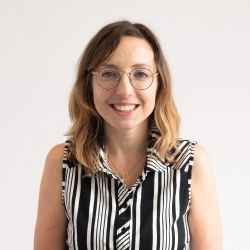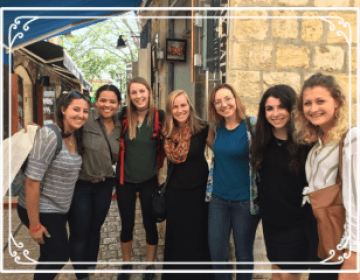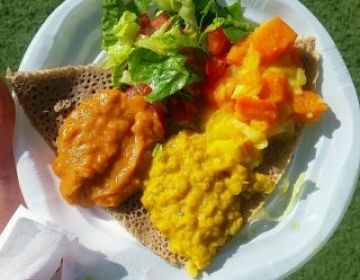SPRING 2017, ISSUE I
A word from the Resident Director:
Spring is finally here and everything is in bloom! The green-roof project on top of the Student House and the International School brings spring as close to the classroom as possible!
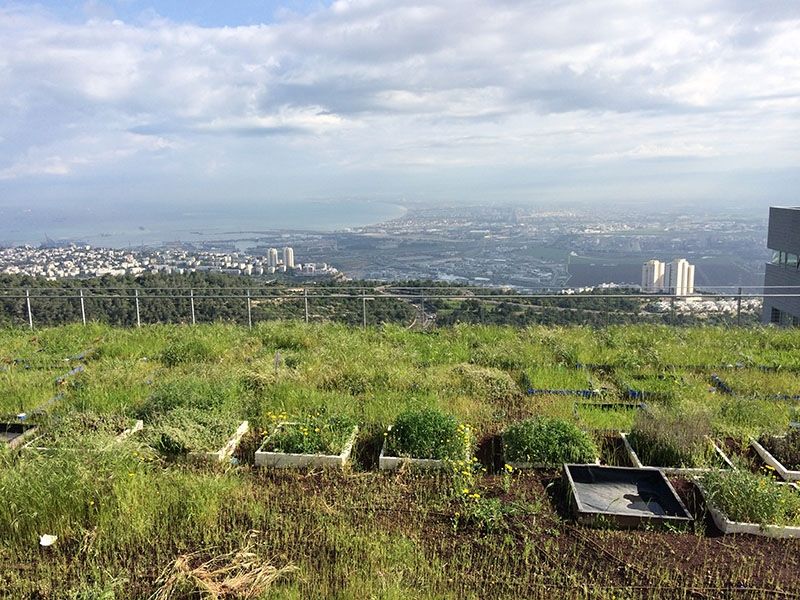
In Israel, spring is viewed as a symbol of a new, fresh beginning. The word for spring “Aviv” is a very popular Hebrew name for both boys and girls and this season even gave its name to the vibrant city of Tel Aviv (which literally means "spring mound")!
True to its name, the Spring Semester has started off splendidly with amazing students from different states and cities in the US and even from Mexico! It’s been a bit over one month since the students arrived in Israel, and they’ve already done so many things; from travelling to the North, Center and South of Israel, through trying all different types of local foods, making new friends, volunteering, trying local sports, and of course, studying a whole lot in the University courses.
The Spring semester is also my first semester on board with CIEE as the Resident Director of the Haifa program. Before I began working in CIEE, I had some background about the country and specifically Haifa (I grew up in the North of Israel, in Akko, and have lived in Haifa for the past 8 years), about the University of Haifa (I’m a graduate of the MA program in Counseling and Human Development of Haifa U) and I had some knowledge about CIEE (I met CIEE students back in 2014 when they joined an interfaith dialogue seminar I was running), however, I still had a lot to learn, prepare and plan before our students arrived. I am glad that everything worked out for the best during orientation and our first month together and I look forward to exploring the country and the complex social and cultural structures in Israel with our CIEE students. We’ve got many interesting excursions and events ahead of us (including: volunteering with local kids, meeting local families and refugees, touring the ancient streets of Jaffa, Safed and Nazareth….).
In the current newsletter issue, we will revisit our orientation session, expand our culinary abilities by learning how to make a “Shakshuka” (a local favorite of our group) and improve our Hebrew skills by tackling an ancient Hebrew proverb.
Wishing you all a week full of spring blossoms and good news!
Sincerely yours,
Martha Shtapura-Ifrah
Resident Director of CIEE, Haifa
Our first days in Israel: A bit about our Spring 2017 Orientation
By Eric Landon
After many hours air travel, I was grateful that CIEE had such a wonderful orientation. After being led to my new temporary home in Israel (the University dorms), we were taken to Fattoush, an Arab restaurant in downtown Haifa. We ate genuine hummus, tabouli, Turkish coffee, and Turkish tea. A fantastic introduction to the upcoming Middle Eastern cuisine we will continue to eat. After dinner, we were able to see the Baha'i gardens which is a UNESCO site. There was an exciting energy in the air of downtown Haifa.
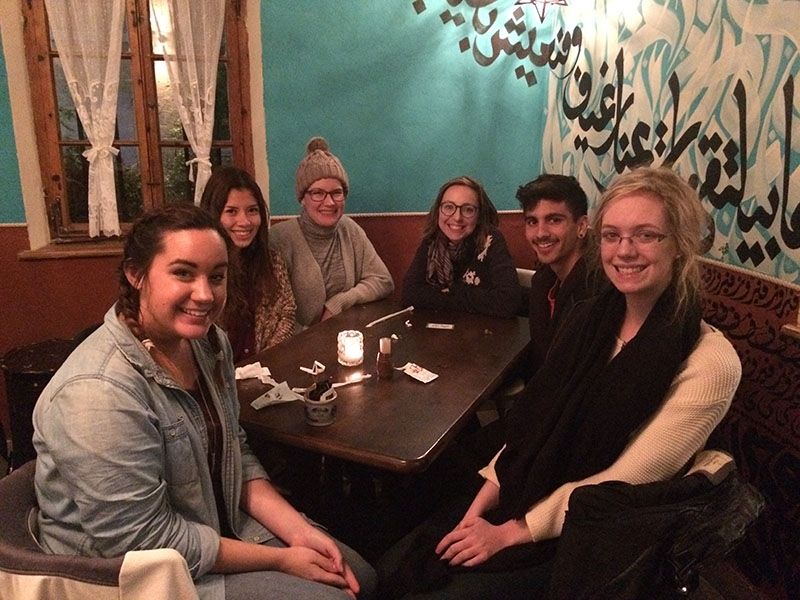
The next day we got to see a bit of downtown Haifa and Wadi Nisnas. We got to smell the Turkish Coffee, see the produce being sold, and see the graffiti artwork of downtown Haifa. One of my favorite things about Israel are the markets you walk around in. It was really cool to see the meaning behind all of the artwork downtown. Everything from safety, to politics, to Jewish and Arab artwork was everywhere. We also went to two famous Falafel shops in downtown Haifa. Of course, both falafel shops were amazing, because falafel is the best, but it was interesting to see two very famous falafel shops right next to each other thriving with business.
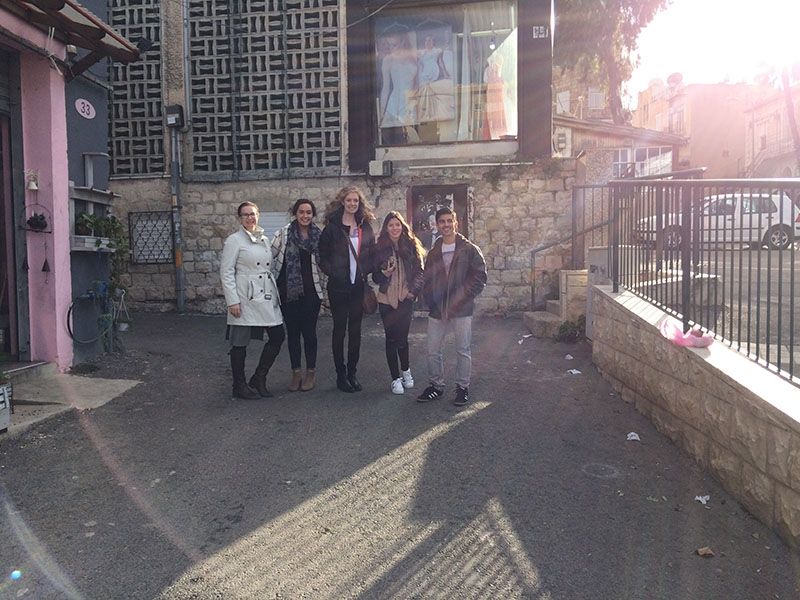
On the third day we had another adventure. We were shown an ancient Jewish necropolis. We went far back in time and witnessed history. We saw grave sites of important ancient figures. Outside of the necropolis were hills filled with poppies and hiking trails. It was absolutely beautiful. Anyone would be in awe and amazed by the green hills, ancient ruins, and history of this place.
We then travelled to Safouri and met Ziad, whose grandparents used to live in the village of Safouri before 1948. To see a different narrative and see how the 1948 war effected some villages was eye opening. I have read about destroyed villages in articles and private studying I have done, but never seen one up close. When I was seeing the hill where the village use to be and seeing the picture of the village, I was astonished by the damage that had been done. It was a learning experience, and I am glad that I was able to see history in front of my eyes.
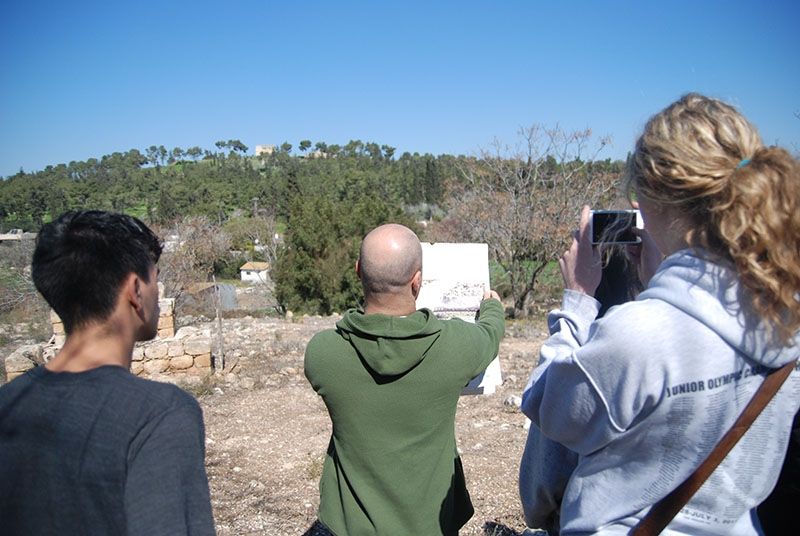
After this, we went to Acre (Akko) and explored the old city. We saw the markets of the Middle East. We saw scarves, traditional Arab clothes, lamps, and spices in baskets. That day we ate at a local fish restaurant inside the market and we were able to feel the Middle Eastern culture. It was an unforgettable experience. The hospitality we were shown by our CIEE leader Martha and the University of Haifa was incredible and I am excited to see what more is to come.
Shake it out: here’s how you make a SHAKSHUKA!
One of the first dishes our students tried at a local café during their orientation- was the Shakshuka. The dish itself originated in North African countries (such as Morroco, Lybia and Egypt). There are many stories about the origin of its name, but the most popular one is that the name Shakshuka stems from the verb “to shake” (which is ‘shakshek’) in Arabic and Hebrew.
The basic ingredients in all shakshuka recepies are eggs, tomatoes and peppers. The rest- has to do with personal preference and creativity.
Here’s the shakshuka that we make at home:
Ingredients:
- Olive oil
- 1/2 chopped chili pepper
- 1 chopped red onion
- 3-4 minced garlic cloves
- 5 soft tomatoes cut into cubes
- 1 tablespoon of sweet paprika
- 1 tablespoon of tomato paste
- 4 eggs
- ½ red bell pepper
- Optional: olives, feta cheese, chopped mint leaves.
Cooking instructions:
- Heat a deep, large skillet or sauté pan on medium.
- Slowly warm olive oil in the pan.
- Add chopped onion, sauté for a few minutes until the onion begins to soften.
- Add garlic and continue to sauté till mixture is fragrant
- Add the bell and chili peppers, sauté until softened.
- Add tomatoes and tomato paste to pan, stir till blended.
- Add spices and sugar, stir well, and allow mixture to simmer over medium heat for 5-7 minutes till it starts to reduce.
- At this point, you can taste the mixture (be careful, it’s hot!) and add spices according to your preferences.
- Crack the eggs, one at a time, directly over the tomato mixture, making sure to space them evenly over the sauce.
- Cover the pan. Allow mixture to simmer for 10-15 minutes, or until the eggs are cooked and the sauce has slightly reduced.
- Garnish with chopped parsley and enjoy!
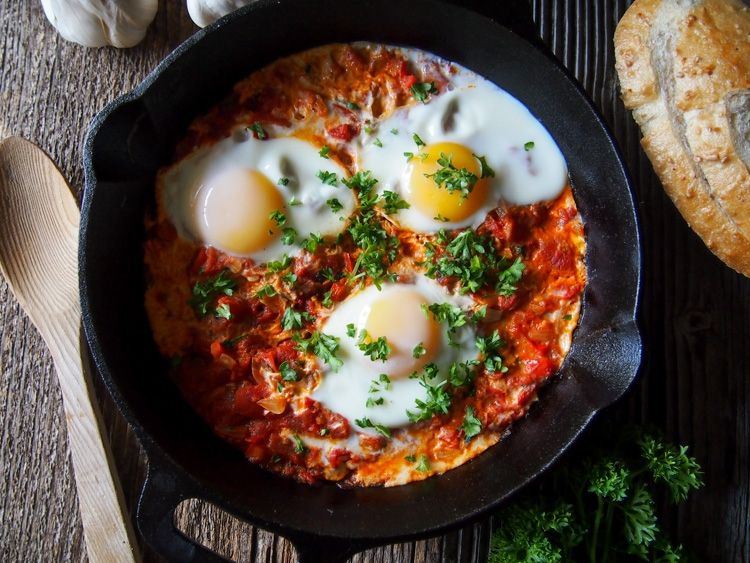
Words on our mind:
In every issue of our newsletter, we’d like to share with you a poem or a proverb in either Arabic or Hebrew. In this issue, we’re learning a proverb in Hebrew from Pirkei Avot.
לֹא הַבַּיְשָׁן לָמֵד, וְלֹא הַקַּפְּדָן מְלַמֵּד
(translation: A shy person does not learn, and an [overly] strict person is not one who can teach).
This proverb implies that a person who is embarrassed to ask questions will not be able to obtain the information that he is lacking and therefore will not be able to learn. In addition, an “overly strict” person cannot teach because his or her students would be afraid to ask questions. This proverb seeks to teach us the importance of questions in the process of learning and self-development. This is important to any sort of learning, but could be especially relevant to a study-abroad experience.
So, the next time you’re stumbling upon a topic that you’d like to learn more about- don’t hesitate to ask questions! And if you get the opportunity to share your knowledge - remember to allow others to ask questions and have the patience to answer them.
Related Posts
Best Time to Buy an International Plane Ticket to the Middle East
Just because you want to study abroad in the Middle East doesn’t mean your plane ticket has to break the bank. There are ways to maneuver through the many travel... keep reading
Our Trip to Safed and the Jordan River
by Abby Prince “Shalom Aleichem, mal’achei hasharet, mal’achei elvon” were the words that we heard blasting from the stereo as we pulled over to the side of the road to... keep reading
10 Things Every University of Haifa International Student Must Know
by Anna Spoerre You know those views that stop you in your tracks? Well here at the university your walk to class every day will be just that. The scene... keep reading
